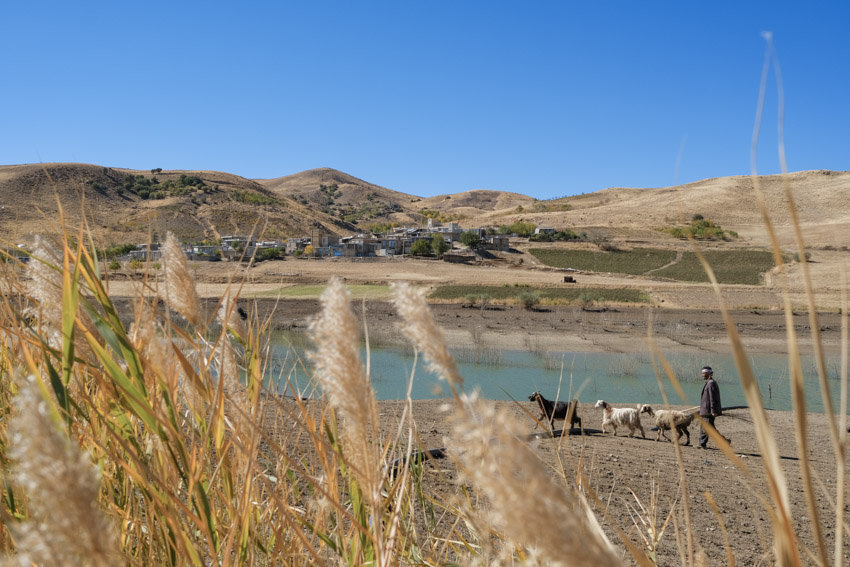Tutorials / CONTACT SHEETS, ALL TUTORIALS
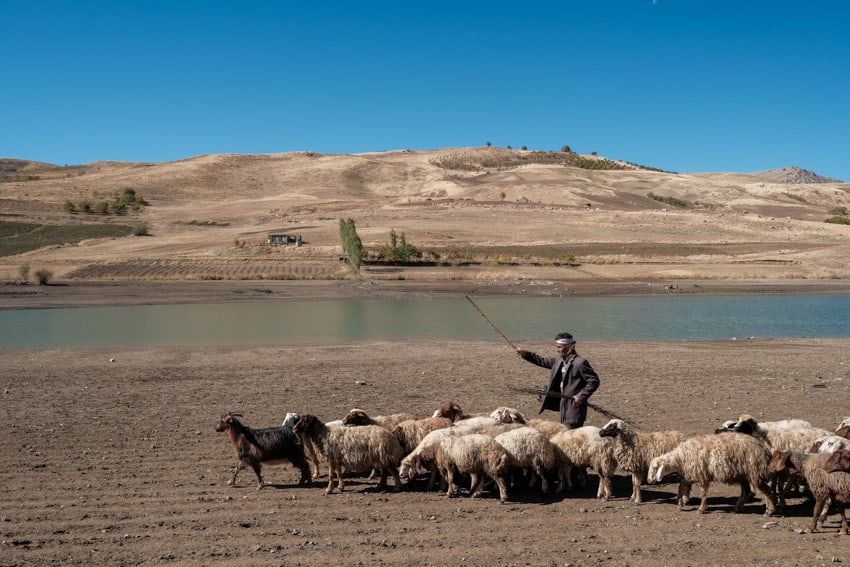
Contact Sheet #19
As I mentioned earlier we went down closer to the water to photograph the sky reflecting in that man-made lake. Our local guide explained to us that the water is used for the farmers to grow potatoes, corn and wheat. This is also an area or Iran where people grow a lot of sheep, for wool, milk and meat.
As I was close to the water shooting some landscape images (yes I know, not my usual type of photography but so tempting in beautiful Iran), Paul, one of the participants of the tour, pointed to me that a shepherd was heading towards us, with his herd of sheep following him.
We waited a minute for the man to walk closer to us, and waved hello from the distance. Probably very curious to find out what these strange people were doing on his lands, he walked closer to us. By that time we had already snapped a few images. Because I was previously taking photos of the lake, I still had in mind to include it in the background, creating layers of colours: brown, blue, brown, blue.
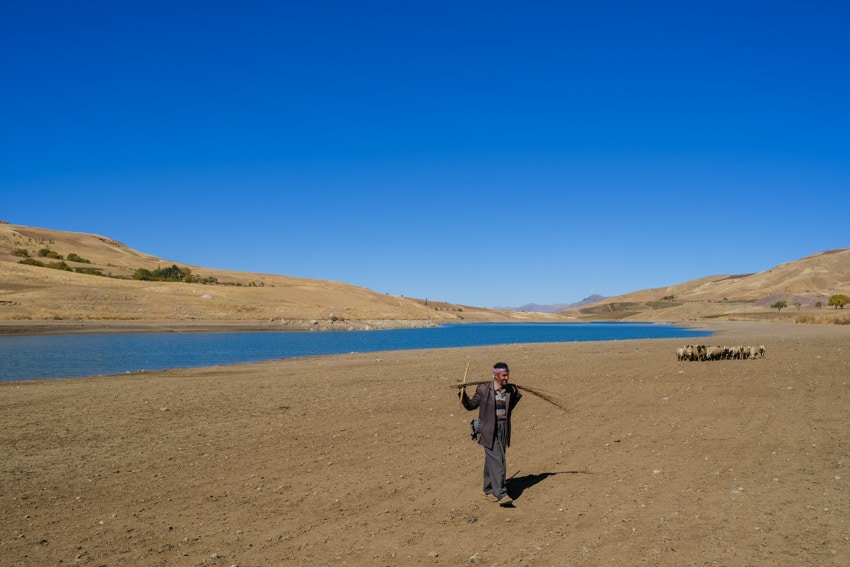
As the shepherd came closer to us, our tour guide started a friendly chat with him. We first asked him where his village was, and he pointed to the next village we could see on the other side of the lake. Keep in mind that any information you can learn from your subject can help you to tell better stories in your images.
We also asked what were these metallic sticks he was carrying in his hands. He had gathered them while walking around and would sell them for recycling, a way for him to make some extra money.
Because his herd of sheep was still far behind him (they had stopped, being probably impressed by the newcomers) I decided this time to open my aperture wide (I was using my 23mm f2.0 lens) in order to isolate him.
Because of the simplicity of the background being now blurred out, my main goal is was to wait for an interesting moment, which would tell a more interesting story or create a more interesting composition. As the man pointed towards some fields behind him, explaining our guide what crops were growing there, his stick created an interesting line, almost point to his sheep.
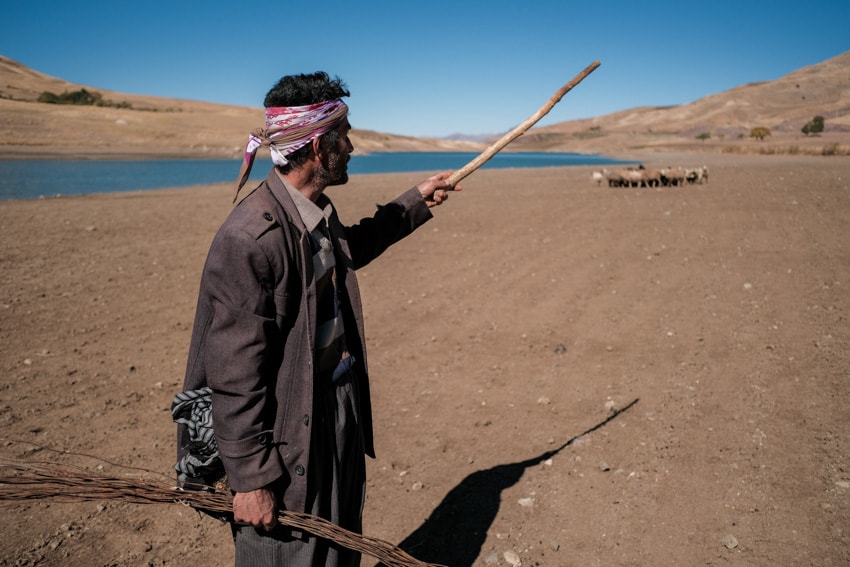
That image was all right but seriously lack interest. It was just a man, standing in a field, looking behind him. I needed to place my subject into his environment, to tell a more comprehensive story about him. He was after all a sheepherder, and I wanted him among his sheep.
After a little while, the shy sheep came closer to us and naturally kept walking towards their village. In order not to let them roam free and eat the melons growing closer to us, the man had to keep moving with them. He joined the herd and guided them in a straight line.
Then the layers all came together, the sheep, the man, the lake, the hills in the background. In order not to have the man being juxtaposed with all these layers, I raised my arms and shot from a higher vantage point.
Then I waited for something to happen, and as the man was directing his herd he raised his stick in the air. A more interesting moment.

Unexpectedly, the shepherd came back to us to continue the conversation with your tour guide. We also kept asking questions to him about his daily life, hoping to learn more about the way people live in these stunning surroundings.
Then, as he walked back to his sheep, he created an interesting dark element that was balancing the bright element which was the sheep. Elements having such contrasts (bright and dark) are a great way to bring a better balance into your image, as well as creating a flow for the viewer’s eyes to follow. Adding the village in the background created a third anchor point and a dynamic triangle through the frame.
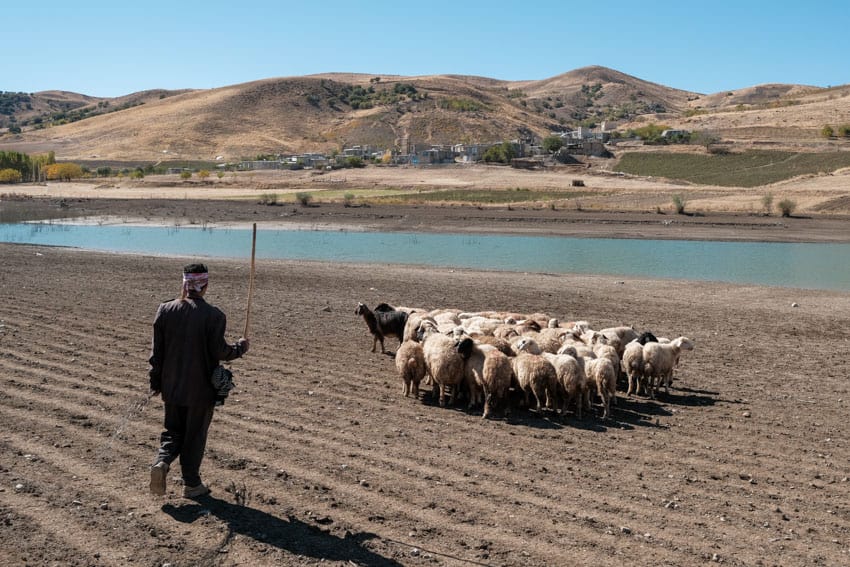
The composition and story suddenly became more interesting, but I personally liked the previous image better, because of all the layers separated. So I waited for the man to get back with his herd, walking along with him. Lucky for me, he stayed behind them, allowing an even better layer separation: man, sheep, lake, mountain, village.
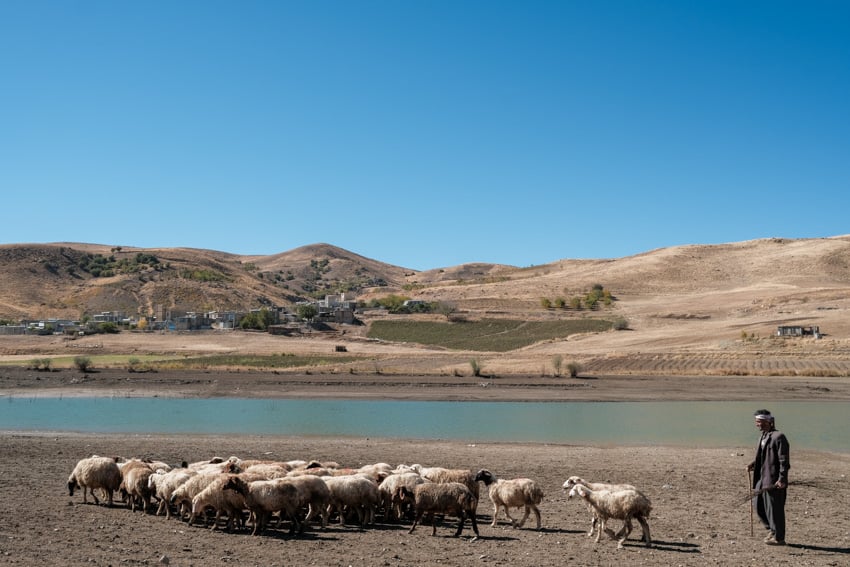
Something I often talk about during my photography workshops: sometimes you have to photograph with your ears.
While I kept walking along the herd, waiting for something else to happen, I suddenly heard a sound coming from my left side. It was the sound created by high grass moving in the wind. I thought that these high grass looked pretty fluffy and would make an interesting foreground, allowing me to frame my main subject.
It is not my favourite image from the series, but I thought it would give me a few other options. Also, remember that a foreground can help you hide an unpleasant element. In that case, I tried to hide a plastic pipe on the ground with the grass.
